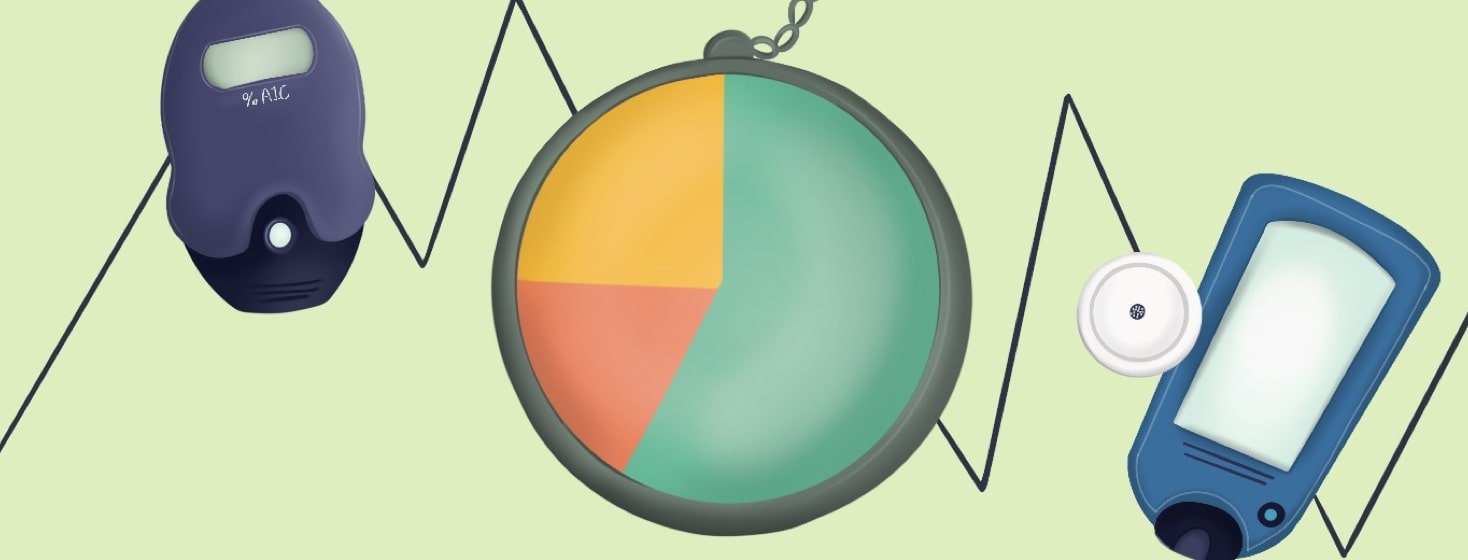Benefits and Drawbacks of Glucose Checks, A1c Levels, and Time In Range
You and your healthcare team gauge the success of your diabetes management plan by using your daily checks and/or your A1c levels. Both are relevant. But, you likely haven’t heard of Time In Range (TIR). So, what is it and how does it compare to A1c and blood sugar checks?
Understanding different blood glucose measurement methods
Let’s start by breaking down the benefits and drawbacks of daily glucose checks and A1cs.
Glucose monitoring
Checking your glucose levels with your meter has a number of positives. It can help you gauge how well your diabetes management plan is working. It can warn you of blood sugar levels which may be becoming unsafe for your body. It can signal a new health problem, like an infection. And, it can give you information to make day-to-day decisions about your diabetes.
On the flip side, it can be costly and time consuming to monitor. It can be one more thing to do in an already busy day. If you have blood sugars that are pretty stable, it can feel “pointless” if you don’t see much difference day-to-day. And, if you struggle emotionally when you see your glucose levels, unsafe levels can through you off.
A1c
A hemoglobin A1c, or A1c level, is often used by your medical provider to make decisions about your diabetes care. Since it’s a 2-3 three month average of your glucose levels, it gives a bigger picture of how well your diabetes management plan is working. It, too, can give a warning signal if glucose levels are becoming unsafe for your body.
One drawback of A1c is, it can hide day-to-day swings in your blood sugars. If you’re having a number of low and high blood sugars, it can average out to a healthy-looking A1c level. Medical providers, not realizing your struggle with blood sugar swings, may encourage you to continue your treatment plan, putting your health and well-being at risk. Additionally, an A1c can be falsely high or low with other health conditions like anemia or kidney disease.
Time In Range
TIR looks at how many of your glucose levels are between 70-180 mg/dl over a minimum two week period. TIR is often used when you’re on a continuous glucose monitor (CGM), but can also be used with a glucometer (it’s best if you’re checking multiple times of the day over that two week period).
TIR gives you another big-picture view of just how many of your glucose levels are in a healthy range. It eliminates the problem the A1c has of hiding glucose swings. It also eliminates concerns about occasionally elevated glucose levels. Basically, it helps remove the idea that “perfect” glucose levels are necessary to live well with diabetes.
The downfall of TIR? It’s too soon to tell. TIR is a fairly new concept, with guidelines for TIR just released in 2019. I’ll admit, however, I’m loving TIR and how it’s changed the conversation I have with the people I work with. It seems more tangible than an A1c, while giving a big picture gauge of diabetes health. TIR is a great addition to A1c and/or daily glucose checks, as far as its assistance in evaluating how well your diabetes plan is working.

Join the conversation